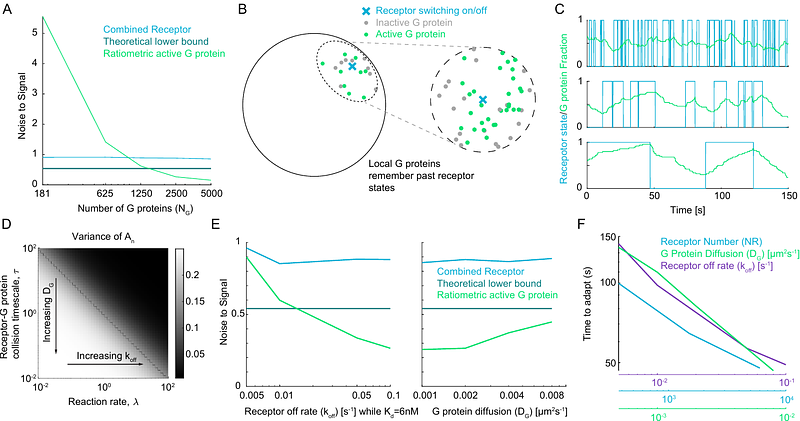Local collective memory from ratiometric signaling outperforms cellular gradient sensing limits

Local collective memory from ratiometric signaling outperforms cellular gradient sensing limits
Ghose, D.; Nolen, J.; Guan, K.; Elston, T.; Lew, D. J.
AbstractCells excel at interpreting noisy chemical gradients during fertilization, development, and immune responses, but the mechanisms underlying this remarkable ability remain poorly understood. Classical models for gradient sensing assume that information is derived solely from ligand-bound receptors, but cells can also utilize information from unbound receptors. Here, we first derive the physical limit for instantaneous gradient detection by a distribution of receptors on a sphere. Surprisingly, we find that a ratiometric biochemical strategy, which compares spatial distributions of active (bound) and inactive (unbound) receptors, can surpass this physical limit. Using theory and simulations, we show this enhancement stems from a local collective memory encoded by downstream proteins that average receptor states sampled over time. Such memory-driven averaging allows cells to reliably interpret gradient direction despite receptor scarcity or noisy conditions, demonstrating how ratiometric sensing mechanisms could broadly enhance cellular responses to directional cues from the environment.